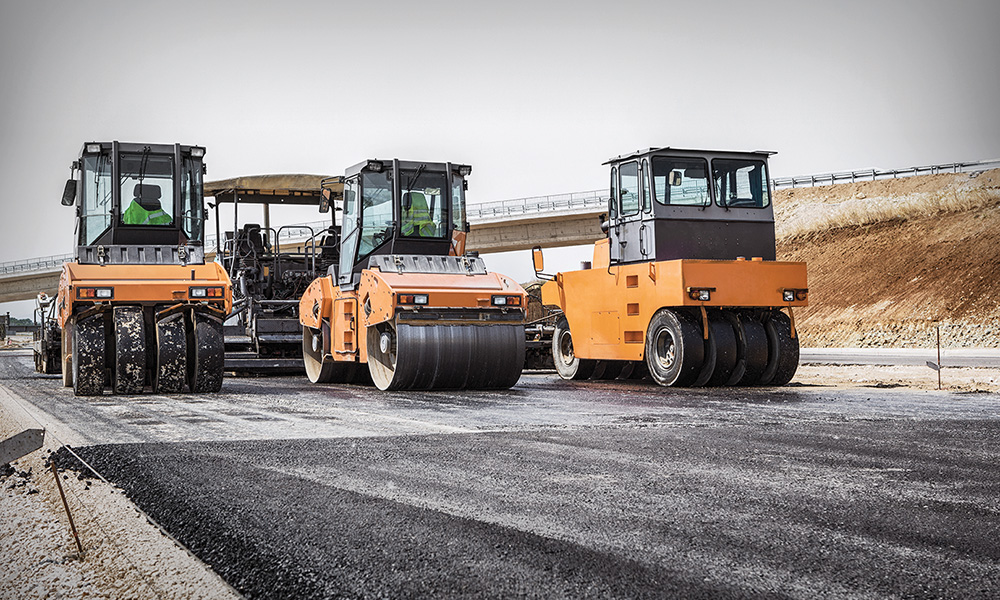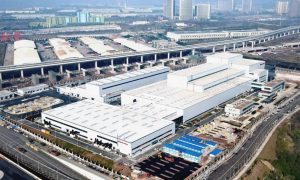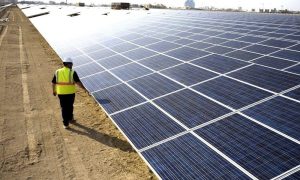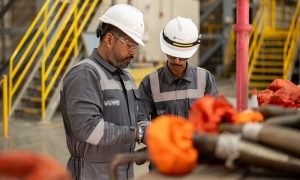A circular economy can drive the way forward for sustainable infrastructure
Dr. Mohamed Nazier, WSP Middle East Managing Director – Transport & Infrastructure, discusses how sustainability management can bridge gaps between public sector climate objectives, supply chain behaviours, and desired circular outcomes

Sustainability has become a key focus area for governments around the world, especially following recent calls for immediate global action on climate change. With the formation of the Glasgow Climate Pact – which saw 197 countries agree to a new climate deal at the conclusion of COP26 in 2021 – the next wave of nationally determined contributions to limit greenhouse gas emissions has bolstered a collective ambition to limit global warming to 1.5-degrees Celsius above the pre-industrial average by 2100.
In the infrastructure domain, embedding circular models could be the ticket to greener infrastructure and sustainable construction practices. However, this is dependent on the public sector remaining firm on national climate plans and advocating stronger ownership, collaboration, and co-governance by stakeholders throughout the value chain.
Translating sustainability objectives into tangible practices throughout the various strata of the supply chain in the infrastructure space remains a key challenge. To address the gaps that exist, here are a few considerations towards how we can bridge gaps between government objectives and supply chain behaviours and strategies in order to deliver more sustainable, green infrastructure.
Sustainability as a business opportunity
Since the dawn of the first industrial revolution, nearly every sector has adopted a linear approach towards the ways in which goods are manufactured from raw materials, sold, consumed, and ultimately discarded. The same ethos exists in the infrastructure sphere, with by-products of the construction process often being discarded instead of re-utilised within the built environment.
Project owners and practitioners have the opportunity to use sustainability not only to minimise environmental damage but also to realise short-term fiscal savings and long-term value in infrastructure projects. By carefully considering their decisions on project location, design elements, construction methodology, material sourcing alternatives, and rerouting, project owners and practitioners can achieve considerable savings and deliver better quality.
For example, WSP Middle East worked with a key client in the GCC on using crumb rubber modified bitumen (CRMB) in producing more durable wearing course mixes. In 2020 alone, we were able to use 477 tonnes of recycled waste tyres, avoiding 143 tonnes of otherwise possible carbon emissions and delivering value in the form of better long-term pavement performance. With our client and contractors, we also recycled more than eight million tonnes of milled asphalt and used them as base-course materials. With recycled asphalt pavement (RAP), we reduced our demand for aggregate, which is a limited natural resource, and we reduced carbon emissions by 60,000 tonnes and led to significant cost savings.

The merits of ingraining sustainability within value management need to be clearly communicated to both project owners and their supply chains to reap the benefits of circularity in infrastructure rollout. By finding ways to share the cost savings resulting from recycling and other sustainability initiatives with designers, contractors, and suppliers, project owners can ensure that their objectives are cascaded down to the main parties in their supply chains, encouraging these organisations to embrace more sustainable practices.
Collaboration as an imperative
Encouraging higher-tier supply chain members to adopt sustainable practices is far less challenging than bringing lower-tier subcontractors and suppliers to embrace sustainability. This is particularly because of the minimal direct interaction between these organisations and project owners and their project managers. However, by obligating higher-tier members to prepare and implement sustainability plans that engage the lower-tier members, and by extending training opportunities to include them, project owners can ensure that the right behaviours are demonstrated and reinforced.
In recent years, sustainability certification has become increasingly popular as companies seek to demonstrate their environmental credentials. While certification is not a guarantee of true sustainability, it can be a useful tool for promoting best practices and raising awareness of the importance of sustainability within the supply chain. Project owners who have successfully obtained such certification can incentivise sustainable behaviours by helping their supply chain members with the certification process and by explaining the relevant standards.
Project owners and their advisors can also initiate sustainability award schemes that are inclusive of all supply chain members to ensure that all tiers are fully in line with the desired sustainability objectives. Our experience is that most supply chain members are eager for recognition from higher tiers and project owners. Such recognition is central to the reinforcement of the desired behaviours and a clear emphasis on the importance of sustainability as part of the owners’ strategy.
The generational shift and the role of trust
In many countries in the Middle East, younger populations are an influential demographic and demonstrate a strong environmental conscious towards matters that impact the future of our planet. This trend will only grow as this innovative, digitally native generation become change agents in the private and public sectors.
One bold action that organisations can make to maintain the authenticity of their sustainability initiatives is engaging young sustainability enthusiasts in management roles as early as possible. Engaging the brightest, most engaged thought leaders of this talent pool could ensure the continuity of sustainability plans and efforts and enable the utilisation of digital for the design, delivery, and management of more sustainable assets in the long term.

Despite the fact that sustainability has been on the global agenda for decades now, the world is still a long way from achieving sustainable development. In order to meet the challenges of the future, it is essential that we find ways to design, build and operate infrastructure in a more sustainable manner. For this to happen, project owners, practitioners and all members of the supply chain have to work hand in hand to find innovative ways to reduce resource consumption and achieve a Net Zero environmental impact.
The shift to renewables and the rise of new mobility modes using cleaner energy and the rise of new digital technologies for more efficient asset management are trends that will significantly support the adoption of sustainable practices as a doctrine by all those involved in the infrastructure industry. However, deliberate and systematic efforts are required to accelerate such adoption if we want to respond with enough agility to climate change.
Read more:
- The rise of sustainable construction trends in 2022 and beyond
- Capital Projects and Infrastructure: ‘The whole is greater than the sum of the parts’
- Making sense of the green agenda in real estate – Is ambition matched by reality?






















